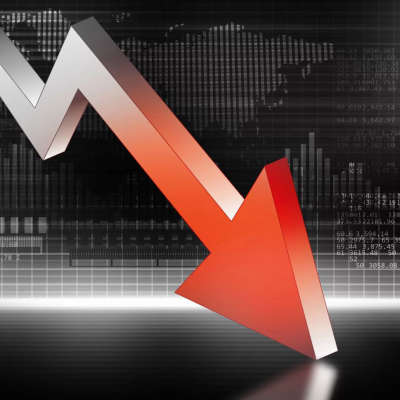Economics for Business: Fundamentals
Successful business is not only about sales and profits but also about understanding the economic fundamentals that influence it. Let's explore key concepts that will make your business more resilient and successful.
25 March 2024

In the modern world, successful business management is impossible without a deep understanding of economic principles and laws. Economics serves as the foundation upon which any commercial activity is built. In this article, we will explore the basics of economics that are necessary for effective business management and making informed strategic decisions.
Understanding economic processes allows entrepreneurs to adequately respond to changes in the external environment and consider numerous factors that influence the success of an enterprise. The fundamental concepts and principles of economics help predict market trends and optimize business processes.
We will start by dissecting key concepts and principles of economics, which will help us build a framework for further exploring more complex issues. We will examine the role of resources, demand and supply, as well as the basic types of markets in which enterprises operate.
An important aspect that we will consider is the impact of government regulations on the economy and, consequently, on business processes. Understanding this influence will allow us to develop more effective management strategies and take fewer risks when making decisions.
Finally, we will discuss the importance of economic indicators for businesses and methods of their analysis, so that entrepreneurs can promptly respond to changes in the economic environment and adapt their strategies according to the current situation.
The basic concepts of economics
In the world of economics, there are several key concepts that play a crucial role in understanding its fundamentals. One of these concepts is demand - the quantity of goods or services that buyers are willing and able to purchase at a specific price within a certain period of time. Understanding demand allows businesses to adapt their marketing strategies and inventory management.
The concept of supply is closely related to demand and reflects the quantity of goods or services that producers are willing to offer in the market at a specific price. The interaction between demand and supply determines the price of goods and services in the market, as well as the volume of their sales.
Another important concept is the market. A market is a place where demand and supply meet, and trade transactions occur. Different types of markets are distinguished, such as competitive, monopolistic, oligopolistic, and monopolistic, each of which has its own characteristics and operating rules.
Resources are also a crucial aspect of economics. Resources are material and immaterial assets used for the production of goods and services. These include labor, land, capital, and entrepreneurial abilities. Rational resource utilization helps increase production efficiency and improve business outcomes.
Types of resources and their utilization
In the field of economics, there are several types of resources that play a key role in the production process. The first and perhaps most important type of resource is labor resources. These include the skills, knowledge, and labor activity of people used to create goods and services. Effective use of labor resources is the foundation for increasing labor productivity and improving business outcomes.
Another type of resource is natural resources. These include land, water, mineral resources, and other natural wealth used in the production process. Effective management of natural resources involves their conservation, rational use, and replenishment to ensure long-term sustainability.
Capital is another important type of resource in economics. It includes physical and financial assets such as equipment, buildings, money, and investments used for the production of goods and services. Effective capital management helps businesses reduce costs and increase competitiveness in the market.
Special attention is also given to human capital, which consists of the knowledge, skills, and experience possessed by workers. Developing human capital through education, training, and staff development is an important factor in increasing labor productivity and innovation in business.
Laws of Supply and Demand
In economics, there are fundamental laws of supply and demand that govern the interaction between buyers and sellers in the market. Understanding these laws plays a crucial role in shaping prices, production volumes, and the overall dynamics of market relationships.
The first law states that as the price of a good increases, the quantity demanded usually decreases, and vice versa, when the price decreases, demand increases. This is explained by changes in buyer incentives: the lower the price, the more attractive it becomes to purchase the good.
The second law pertains to supply. It asserts that as the price of a good increases, the quantity supplied by producers willing to offer it in the market increases, and when the price decreases, it decreases. This is related to changes in the profitability of production: the higher the price, the greater the profit, and vice versa.
The third law states that supply and demand tend to reach equilibrium in the market, where the quantity of the good that buyers are willing to purchase equals the quantity that producers are willing to offer.
These laws interact with each other and determine the price and quantity of goods in the market. It is important to understand that changes in demand or supply can lead to a shift in equilibrium and changes in prices and sales volumes. Analyzing these laws allows businesses to forecast market reactions to changing conditions and make more informed decisions regarding pricing, marketing strategies, and inventory management.
Primary Market Types
There are several primary types of markets, each characterized by specific features and operating rules. The first type is a competitive market, where there are numerous sellers and buyers, homogeneous goods, and no participant can influence the price. Such competition leads to price reduction to the cost level and ensures efficient resource utilization.
Another type of market is a monopolistic market, where there are many sellers, but each offers a unique product or service, allowing them to set prices with some degree of control. This is typical in the service sector or for products with a high level of differentiation.
An oligopolistic market is characterized by a small number of large sellers who control a significant market share. These companies often operate in conditions of high interdependence and may cooperate or compete with each other, which can lead to the formation of cartels or strategic behavior.
Finally, a monopolistic market is characterized by a single seller controlling all the supply of a product or service. In such a market, competition is absent, allowing the monopolist to set prices and sales volumes at its discretion.
Each market type has its own characteristics and impacts on company behavior, pricing, innovation, and resource efficiency. Understanding these types helps businesses adapt to market conditions, develop effective strategies, and make informed decisions.
The Role of the State in the Economy
In economics, the role of the state is of paramount importance as it influences various aspects of economic activity. Initially, it is worth noting that the government performs the function of regulating the economy. This includes the establishment of laws, norms, and rules that regulate relationships between market participants and define the conditions for entrepreneurial activities.
One of the important aspects of the role of the state is ensuring the stability of the economic system. Government institutions take measures to prevent economic crises, control inflation, maintain financial stability, and provide social protection for the population.
The state also plays a crucial role in creating a favorable investment climate. It can provide incentives and subsidies for the development of specific sectors of the economy, attract foreign investment, and create conditions for the development of small and medium-sized enterprises.
Another aspect of the role of the state is ensuring social justice and equality. The government can introduce social support programs, ensure access to education, healthcare, and housing, as well as combat poverty and social inequalities.
An important function of the state is also regulating foreign economic activities. This includes control over foreign trade, customs duties, currency operations, and other aspects of international interaction between countries.
The state also ensures the protection of property rights and competition, which promotes the development of a free market and innovation in the economy. It regulates relationships between entrepreneurs, protects them from unfair competition, and monopolistic practices.
Key Economic Indicators
Key economic indicators play an important role in assessing the state of a country's economy and making decisions in the fields of policy and business. One of the key indicators is GDP (Gross Domestic Product), which reflects the value of all goods and services produced in a country over a certain period of time, usually a year. GDP is one of the main indicators of economic growth and the well-being of the population.
Another important economic indicator is inflation. Inflation measures the rate of price increase for goods and services in the economy over a certain period of time. Moderate inflation is considered normal for a healthy economy, but high or unstable inflation rates can lead to a decrease in purchasing power and economic uncertainty.
Unemployment is also a significant economic indicator. It reflects the proportion of the population that is not employed but actively seeking work. High levels of unemployment can indicate a lack of demand in the labor market and economic problems in the country.
Another key indicator is the balance of trade, which reflects the difference between exports and imports of goods and services. A positive balance means that a country exports more than it imports, which contributes to an increase in currency reserves and strengthens the national currency.
The level of debt is also an important economic indicator. It reflects the total amount of debt of the government and the private sector. High levels of debt can put pressure on the budget and the economic stability of the country.
Investments in human capital also play a crucial role in the economy. This indicator reflects the amount that the government or private companies invest in education, healthcare, scientific research, and other areas to develop human potential and increase labor productivity.
The Impact of Economic Factors on Business
The influence of economic factors on business is an integral part of its functioning. The first and most obvious factor is the state of market conditions. Economic growth, inflation, the level of unemployment, and other indicators can affect the demand for goods and services, which in turn reflects on the revenue and profits of enterprises.
Currency exchange rates also have a significant impact on business. Changes in exchange rates affect the prices of imported goods and raw materials, which can influence the cost of production and the competitiveness of the enterprise in the market. Businesses engaged in international trade are particularly susceptible to the effects of currency fluctuations.
Regulation by the government also plays a crucial role for businesses. Changes in tax legislation, labor laws, as well as the introduction of new economic rules and norms can affect the financial condition of enterprises and their operational activities.
Economic crises and recessions can also have a serious impact on businesses. A decrease in consumer spending, reduced investment, and worsened access to credit resources can all lead to difficulties in the operation of enterprises and even bankruptcy.
However, despite all the negative factors, economic changes can also provide new opportunities for businesses. For example, increased demand for certain goods or services during a crisis period can open up new markets and monetization methods.
Strategies for Managing Economic Risks
Managing economic risks is an important aspect for businesses of any scale. It aims to minimize potential threats that could negatively impact a company's financial position. One strategy for managing economic risks is diversifying investment portfolios. This involves distributing investments across different assets and markets to reduce risk and ensure more stable returns.
Another important strategy is the use of financial derivatives. Derivatives such as options, futures, and swaps allow hedging against changes in asset prices and currencies. They help smooth out yield fluctuations and protect businesses from adverse financial consequences.
Additionally, analyzing and forecasting the economic situation is a crucial risk management tool. This includes monitoring macroeconomic indicators, assessing potential threats and opportunities, and developing strategies to adapt to changing market conditions.
Moreover, companies can employ risk insurance strategies. This may include property, liability, business, and other aspects of company activity insurance. Insurance helps protect businesses from financial losses in the event of unforeseen circumstances.
Another strategy for managing economic risks is establishing reserve funds and capital. This allows companies to have financial reserves to cover unforeseen expenses, thereby reducing the impact of economic crises and instability on the business.
Integration of technology and automation can also aid in managing economic risks. Using specialized programs and algorithms allows for more accurate market analysis, making more informed decisions, and responding promptly to changes.
Conclusion and recommendations for businesses
In conclusion, it is important to emphasize that understanding economic factors and effectively managing risks are key elements of successful business management. The market environment is constantly changing, and only flexible and adaptive companies can survive and thrive in such conditions. Therefore, it is crucial to constantly monitor economic indicators, analyze trends, and forecast potential risks.
For businesses, it is recommended to develop a risk management strategy that includes various methods and tools, such as investment diversification, the use of financial derivatives, economic situation analysis, and insurance. This will help the company reduce the level of potential threats and ensure a more stable financial position.
It is also important for businesses to have an action plan in case of economic crises or market instability. Being prepared to react and make quick strategy adjustments can save the company from significant losses and help it adapt to changes in the environment.
Businesses should also strive for continuous development and innovation. Implementing new technologies, improving processes, and exploring new market opportunities allow companies to remain competitive and successful in the long run.
Equally important is having a flexible and adaptive team capable of quickly responding to changes in the economic environment. Training employees, developing leadership qualities, and continually improving professional skills will help the company successfully overcome any difficulties.
Finally, it is important to remember that businesses should strive not only for financial profit but also for social responsibility. Considering the impact of their activities on society and the environment, companies should adhere to the principles of sustainable development and care for the well-being of their employees, customers, and society as a whole.




